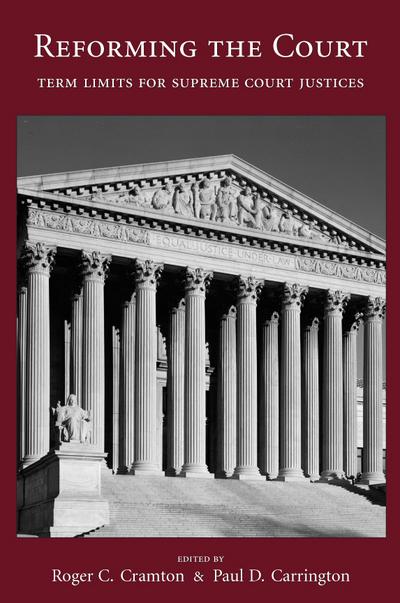Reforming the Court
Term Limits for Supreme Court Justices
by Roger C. Cramton, Paul D. Carrington
2006
Tags: Constitutional Law and Courts
516 pp $48.00
ISBN 978-1-59460-213-9
The Supreme Court today exercises power over the lives of citizens that, in important respects, exceeds that of other branches of the federal government. Life-tenured justices wield this enormous power for two or three decades and the only process that provides some accountability to the people occurs as new appointments regenerate the Court. Because justices now serve so long, that process occurs only rarely and irregularly and may be affected by a justice's desire to have a successor appointed by a like-minded president. Some presidents have great influence on the Court's future decisions by the happenstance that they receive three or more appointments; other presidents have little or no influence because no vacancies arise during their terms. This collection of essays by eminent legal scholars provides a comprehensive, balanced, and compelling examination of a largely neglected, but very important, subject. What are the harmful consequences of the lengthening tenure of Supreme Court justices? Do those consequences suggest that reform is necessary or desirable? Can the problem be remedied by congressional enactments or is a constitutional amendment required?
"[Q]uite accessible, devoid of a lot of legal jargon… a must read for anyone interested in the politics of judicial reform, as well as those interested in the current debate among legal academics about the effects of life tenure on judges." — Law & Politics Book Review


